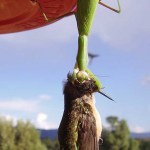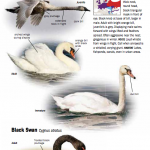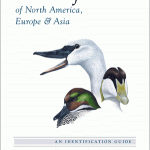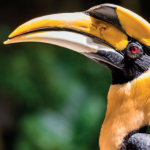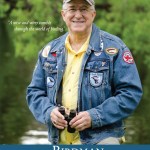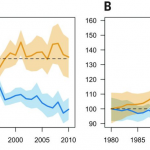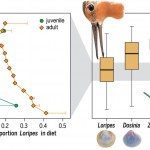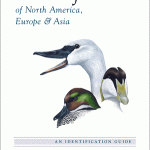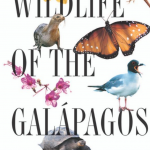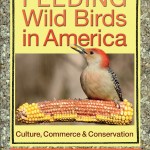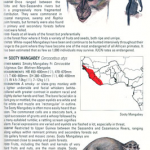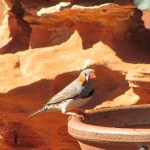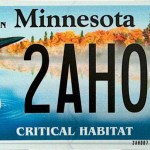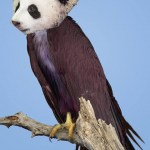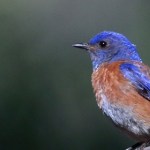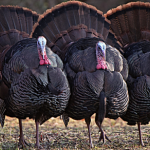birds
Giant insects can eat tiny dinosaurs.
In this case, the giant insects are praying mantis, and the dinosaurs are hummingbirds and other small birds. In some cases, maybe most cases, this involves small birds like hummingbirds being taken at nectar sites (natural or otherwise) by introduced species of praying mantis in the US.
Here's the info from the recently published paper:
Bird Predation By Praying Mantises: A Global Perspective, by Martin Nyffeler, Michael R. Maxwell, and J. V. Remsen, Jr.
ABSTRACT
We review 147 incidents of the capture of small birds by mantids (order Mantodea, family…
Just got my copy of Birds of Europe, North Africa, and the Middle East: A Photographic Guide by Frédéric Jiguet and Aurélien Audevard.
This is the first and only field-ready photographic bird guide that covers every species in Europe. There are 2,200 photos covering 860 species. The West Asian and North African coverage is of all of the species there that have occurred in Europe, so think of this primarily as a European guide.
The entry for the Mute Swan.
I hasten to add and emphasize. These are not your grandaddy's photographs. Many photographic guides have pretty nice looking…
A few suggestions for holiday gifts, or library upgrades, in the topic of birds.
Thinking About Birds Thinking
Some very interesting books came out this year that investigate bird brains.
Bird Brain: An Exploration of Avian Intelligence by Nathan Emery is the best current book on animal intelligence, and one of the best bird books you'll be able to lay your hands on right now.
My review of the book is here.
What the Robin Knows: How Birds Reveal the Secrets of the Natural World by Jon Young is an exploration of nature via the senses (mainly visual and auditory) of birds, and of the…
This is just a pointer to my latest post at 10,000 birds on a tool using crow from Hawaii, as well as recent climate change related threats to the birds of that island state.
Crows are smart. Anyone who watches them for a while can figure this out.
But that is true of a lot of things. Your baby is smart (not really). Your dog is smart (not really). Ants are smart (sort of).
It takes a certain degree of objective research, as well as some serious philosophy of intelligence (to define what smart is) to really address this question. But when the research is done and the dust settles, crows are smart.
We were all amazed (or not, because we already knew that crows are smart) to find that New Caledonian crows made and used tools. Now, we know (see my most recent…
The Birdman of Lauderdale is a collection of essays by birdman Clay Christensen.
Clay writes the popular "Birdman of Lauderdale" column for the Saint Paul Park Bugle, and leads birdwatching field trips in the Twin Cities area.
This is a collection of updated and edited essays from that publication, most about bird watching, or the birds themselves. Is it OK to hate cowbirds? What is it like to witness the takeoff of a mob of cranes? How do birdwatchers find birds anyway? What is bird banding all about? These and other burning questions are addressed in engagingly written snippets.
I…
I've got a new post up at 10,000 Birds on a study looking at changing populations of several hundred common species of birds in Europe and North America (mainly the US).
The two subcontinents exhibit dramatically different patterns, as shown in the enigmatic graph above.
Go to the post to unravel this intriguing mystery!
You've heard the phrase, "Nothing in biology makes sense except in the light of evolution," an insightful phrase penned in 1972 by Theodosius Dobzhansky. I would like to add a second part to that phrase, and it goes like this: "... and, nothing in evolution makes sense except in the light of co-evolution." This would hardly be an exaggeration, and it can hardly be better exemplified than with examples from migratory birds. Migratory birds have to be adapted to at least three different ecological settings. They breed in one area, migrate (and often spend considerable time) through another…
There are three kinds of books that count as animal (usually bird) guides.
1) A pocket field guide of the critters of a reasonably circumscribed geographical area, like the Peterson Field Guide to Birds of Eastern and Central North America. This is a small book that can fit in a big pocket, and a classic guide like this one is something you'll want to have with you while bird watching in the eastern or central US.
2) A big book, not suitable for pockets, of the critters of a reasonably circumscribed geographical area. A great example of this is The Crossley ID Guide: Eastern Birds . It…
Wildlife of the Galápagos: Second Edition (Princeton Pocket Guides), by Julian Fitter, Daniel Fitter, and David Hosking is both a field guide and a travel guide, focusing on the Galapagos Islands. It includes basic information about each island and each town or tourist destination, and a comprehensive guide to how to visit, what to bring and not bring, and otherwise plan your trip to these amazing evolution-drenched islands.
The wildlife that is covered includes birds, other land vertebrates including the famous tortoises and lizards, offshore mammals, fish, insects, and plants. There is…
When the Texas A&M University Press asked me to consider reviewing Feeding Wild Birds in America: Culture, Commerce, and Conservation by Paul Baicich, Margaret Barker, and Carrol Henderson, I had mixed feelings.
Was this just another backyard bird feeding guide? That would be nice, but not too exciting. After all, feeding birds is just a matter of getting a bird feeder and keeping it full, right? Was it an indictment of what some might consider a bad practice, because it brings birds in close contact with killer windows and cats, and causes them to become dependent on fickle human…
Here we look mainly at bird books, but I wanted to also mention a couple of other items on non-birds. I've mixed in some new books along with a few other books that have come out over the last couple of years, but that are still very current, very amazing books, and since they have been out for a while, may in some cases be picked up used or otherwise less expensively.
Let's start with the least-bird like book, one that will be a must have for anyone traveling to or studying Africa. This is The Kingdon Field Guide to African Mammals: Second edition. This is a newly produced edition of this…
The Arizona Physiological Society held their 8th annual conference Nov 13-14 at Midwestern University in Glendale. This was a great meeting for comparative physiologists!
Here are some comparative physiology highlights from the meeting:
The 2015 Keynote Speaker was Dr. Andrew Biewener (Harvard University) who spoke about "How do running animals acheive stability? The neuromechanical control of rapid locomotion." In his talk he focused on understanding how Guinea fowl avoid tripping when running really fast over uneven surfaces.
The 2015 Arizona Distinguished Lecture was given by Dr.…
Changes in the daily variability of high and low temperatures in certain regions may stress wild bird populations. A new study of semi-wildish Zebra Finches demonstrates this. I have a post on the research here, at 10,000 birds. Have a look!
Check out my latest contribution to the bird blog 10,000 birds:
Faithful Loons and Human Lunacy
Every year there manage to be two Loons out in front of the cabin, up in Minnesota’s lake country. They nest on the same, ever-expanding semi-floating but occasionally shrinking nest over behind the point, so we can’t see the nest without going across the marsh in a canoe. It is a great place to nest, but for one small detail. Behind the embayment formed by the point is a tall bluff, the edge of an ancient river valley that passed through the area during one or more (probably a few) prior…
People were fascinated, excited, and some were enraged, by this awareness raising campaign of BirdLife South Africa.
I might have preferred this modification:
I came across the "I Spy Physiology" blog today from the American Physiological Society. The blog focuses on physiological topics relevant to daily life. There are also a couple of comparative physiology gems in the blog that you can view using the links below:
How birds my help us understand diabetes
How research on walking stick insects may help us to understand how the brain times leg contractions to regulate walking
Pretty neat stuff!
This is one of those great examples of research you can probably use in an advanced biology classroom (high school) or intro college bio pretty effectively. It includes birds. It includes hormones. It includes evolution. What else is there, really?
I did a very brief writeup on it here, and you can get the original paper which is very straight forward and readable.
The bottom line: Females in one species of bird manage to figure out that under certain, occasional conditions if they produce really obnoxious and overbearing sons, those sons will do well. So they do. There is a phylogenetic…
Are you done with your Thanksgiving leftovers yet? You might think so, but not quite. We have one more helping of Turkey for you.
This is "Another Helping of Turkey," the second of two installments of Eat This Podcast with Jeremy Cherfas:
The domestication of the turkey probably first took place around 2000 years ago in south central Mexico, possibly for their feathers and ritual value rather than their meat. Their rise to the top of the American festive table came much later, not with the Pilgrims but with Charles Wampler, whose efforts to promote turkey raising started Rockingham County,…
"As Thanksgiving ebbs into memory and Christmas looms on the horizon, Eat This Podcast concerns itself with the turkey. For a nomenclature nerd, the turkey is a wonderful bird. Why would a bird from America be named after a country on the edge of Asia? The Latin name offers a clue; the American turkey is Meleagris gallopavo, while the African guineafowl is Numida meleagris. But why did the first settlers adopt a name they were already familiar with, rather than adopt a local indigenous name such as nalaaohki pileewa for the native fowl. Simple answer: nobody knows..."
Listen to the podcast (…
